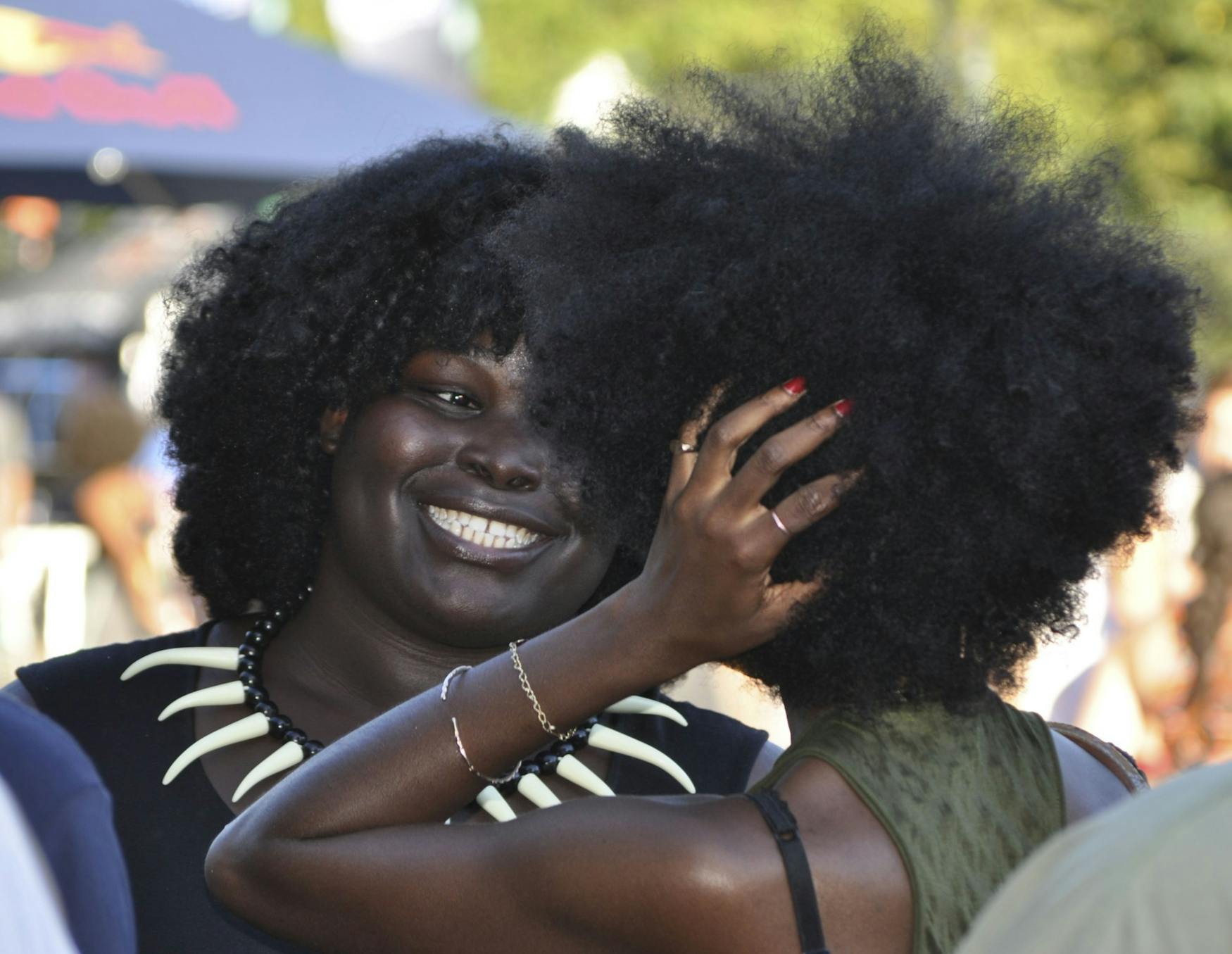The journey to embracing my natural curls
Growing up, my Mama was always the one who styled my hair. She would do the difficult labor of washing, conditioning, and combing my strong curls. As a young brown girl, I don’t believe I ever realized how much work it took to style natural hair, but I would always cry because I was so tender-headed. I loved the way my Mama did my hair, but I hated being in the “hair chair.” The hair chair, a traditional wooden chair with a pillow in the seat, was pulled into the living room whenever Mama was going to do my hair. I’d sit there for what felt like hours. Then when I was done, I would rush to the mirror to examine my beautiful braids. Recently, I went down memory lane — I looked at old polaroid pictures and flipped through them fondly. I was amazed as I looked at myself, realizing that when I was younger, my hair was always natural. I realized that, back then, I was free. I was so happy and I never really seemed to think about beauty or question if my hair was an obstacle to that definition.
As the years progressed, so did my definition of beauty. In high school, I began letting society’s beauty ideals influence me. So I reached for curling irons and straighteners. At first, I would only straighten my hair for special occasions, but later I would use a flat iron monthly and sometimes even weekly. I often did this not only so that my hair would look better but also because of ease. My hair was just so much easier to manage when I straightened it. And not just for me, but seemingly for everyone else. In case it wasn’t obvious, I was not a “cool” kid throughout school, but for some reason, it seemed that whenever my hair was straightened, the cool kids noticed me more. I was even complimented about my hair looking nice. Whenever my hair was natural, people had the nerve to touch my hair without asking, as if to signal I am different from other people.
Unfortunately, for many Black women and men, the way they wear their hair can be the reason they gain employment or even the reason they are pulled out of class. Recently, there has been a wave of aggression against hairstyles. “Black students are three to six times more likely to be suspended or expelled from school,..” per the Brookings Institution. Roughly 70% of all suspensions are discretionary, which means it could be because of dress code or because of a student’s hairstyle. Black women’s hair has been politicized for centuries, as even the most prominent figures —including Uzo Aduba, Tyra Banks, Zendaya, and many others — still struggle with this.
I can remember the moment when Barack Obama won the election. Sitting on my soft, carpeted floor as a young girl, I watched as "a black family at 1600 Pennsylvania Avenue [...] shattered [a] political barrier." I was so happy to see a first family that looked like me, and Malia and Sasha reminded me of my sister and I. Their family was a subversion of societal expectations of a Black family in many ways; yet, in the case of hair, not so much. Just being Black in the White House was controversial enough, and hair would only spark more controversy, so it was avoided by the Obamas.
In a 2009 TIME article by Jenee Desmond Harris, she writes about why Michelle Obama’s hair is important. A few people voiced their opinions about Obama’s decision to straighten her and her daughters’ hair, saying this was to fit certain expectations of appearance and professionality. While Desmond writes, “Her hair is the catalyst for a conversation that begins with style but quickly transcends outward appearance and ultimately transcends Michelle herself — a symbol for African-American women’s status in terms of beauty, acceptance, and power.”
Michelle Obama has been and continues to be one of the most influential Black women to this day. I have always looked up to her, like many other young girls. I looked to her for wisdom, intellect, political identity, and of course her fashion and hair. As a teenage girl, I would straighten my hair because I wanted my hair to look just like Michelle Obama’s.
There was this idea of what beautiful hair looked like in my head and Michelle’s hair was the epitome of that. So now seeing Michelle Obama wearing her hair naturally was definitely an important moment, and quite recently she had knotless braids at the official White House portrait. I was so glad to see the overwhelming support and positivity toward wearing her hair this way.
As a response to the perpetual and ever-growing aggression against Black hair and the stigmatization in school and workplaces, the C.R.O.W.N Act was created. The purpose was to “ensure protection against discrimination of race-based hairstyles by extending statutory protection to hair texture and protective styles such as braids, locs, twists, and knots in the workplace and public schools.” Originally started by former California State Senator Holly Mitchell, it has now been adopted by 18 other states, including Massachusetts.
From an early age, I always felt as if there was a right choice for my hair. I thought I had to choose between wearing my hair natural or straight; rocking braids, twists, or Bantu knots; or just being free and natural. A recent episode of Black-ish, “Season Six: Episode 11,”which explores Diane’s choice between straightening her hair or going natural, reminded me that within Black beauty standards, there is no such thing as a wrong choice when it comes to how you present yourself or your hair. Because as Rainbow Johnson, played by Tracee Ellis Ross, tells her daughter, “Despite what the world tells us, all Black hair is beautiful.”



Please note All comments are eligible for publication in The Justice.